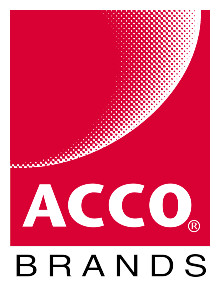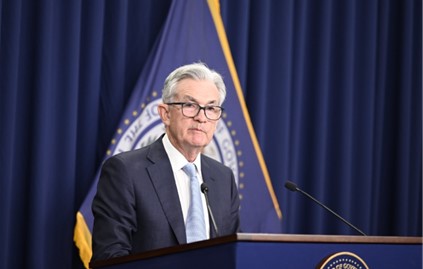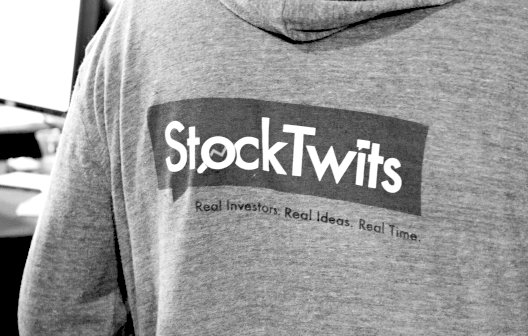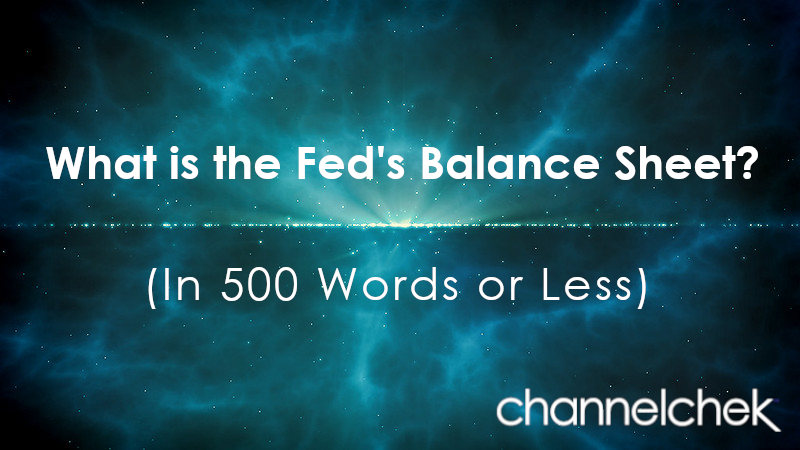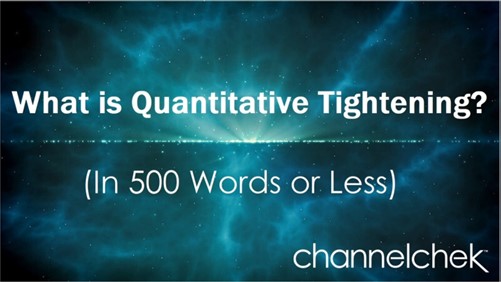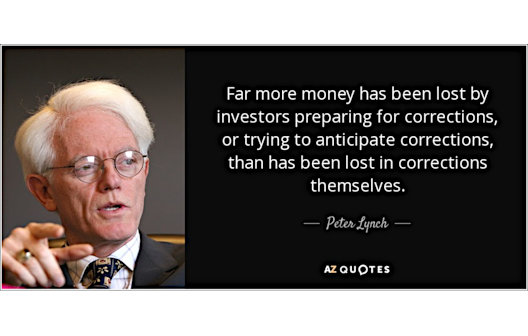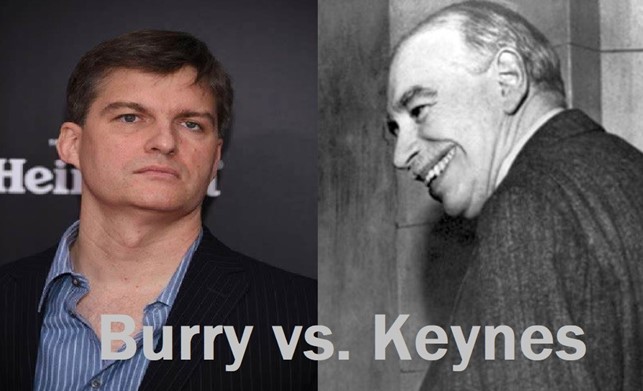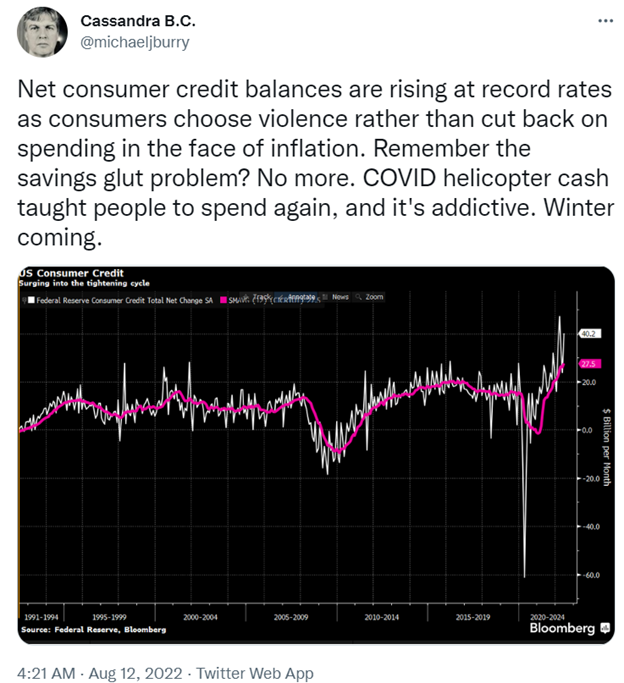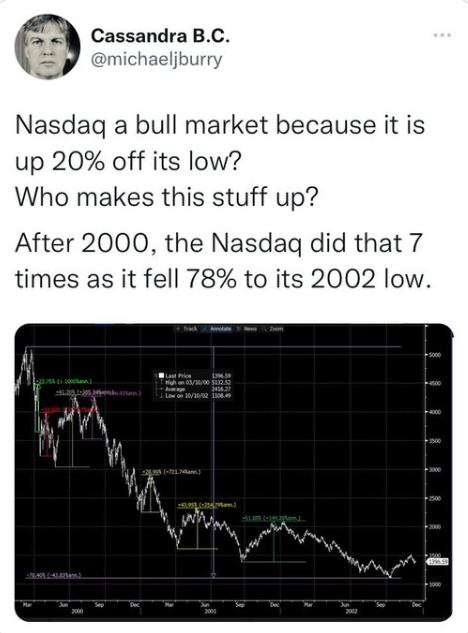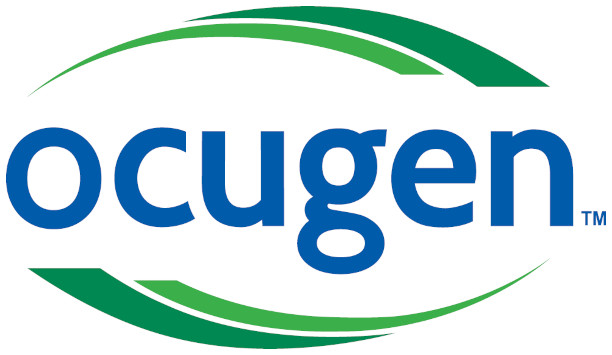
Alvopetro Announces Record Funds Flow from Operations for the Second Quarter of 2022 & Q2 Results Webcast
Research, News, and Market Data on Alvopetro Energy
Aug 11, 2022
CALGARY, AB, Aug. 11, 2022 /CNW/ – Alvopetro Energy Ltd. (TSXV: ALV) (OTCQX: ALVOF) announces operating and financial results for the second quarter of 2022 including record funds flow from operations of $12.4 million. We will host a live webcast to discuss Q2 2022 results on Friday August 12, 2022 beginning at 8:00 am Mountain time.
All references herein to $ refer to United States dollars, unless otherwise stated and all tabular amounts are in thousands of United States dollars, except as otherwise noted.
Financial and Operating Highlights – Second Quarter of 2022
- Daily sales averaged 2,359 boepd in Q2 2022, consistent with the Q2 2021 average of 2,361 boepd and a 6% reduction from the Q1 2022 average of 2,501 boepd as a result of a planned five-day shut-down of our gas processing facility to complete necessary work in advance of the facility expansion.
- On February 1, 2022, our contracted natural gas price under our long-term gas sales agreement increased 48% to Brazilian real (“BRL”)1.94/m3. With all natural gas sales in Q2 2022 at this higher price and an appreciation of the BRL relative to the USD compared to Q2 2021, our average realized natural gas price increased to $11.90/Mcf compared to the Q2 2021 average price of $6.06/Mcf and the Q1 2022 average price of $10.03/Mcf. Higher commodity prices resulted in a 93% increase in our natural gas, condensate and oil revenue compared to Q2 2021.
- With higher realized sales prices, our operating netback increased to $63.96 per boe in Q2 2022, an improvement of 103% from Q2 2021 and 19% from Q1 2022.
- We generated cash flows from operating activities of $13.0 million ($0.38 per basic share and $0.35 per diluted share) and funds flows from operations of $12.4 million ($0.37 per basic share and $0.34 per diluted share), increases of $7.3 million and $7.0 million, respectively compared to Q2 2021.
- We reported net income of $6.6 million, an increase of $2.8 million compared to Q2 2021.
- Capital expenditures totaled $6.3 million, focused on drilling costs for our 182-C1 and 183-B1 wells, long lead purchases, final costs for our Murucututu field production facility installation on other development costs on our Murucututu project.
- We repaid an additional $2.5 million of our credit facility, bringing the balance outstanding to $2.5 million. As at June 30, 2022, we had a net working capital surplus of $11.6 million, including $13.7 million in cash and cash equivalents. The Company’s working capital net of our credit facility balance improved to $9.1 million, compared to $7.3 million as of March 31, 2022.
- Effective August 1, 2022 our natural gas price has been set at BRL1.94/m3 or $11.28/Mcf (based on our average heat content to date of 107% and the July 31, 2022 BRL/USD foreign exchange rate of 5.19). The adjusted price is based on the ceiling price in the contract, which was adjusted to $10.22/MMBtu effective August 1, 2022. While the ceiling price increased by 6% from the February 1, 2022 ceiling price, due to the appreciation of the BRL relative to the USD in the first half of 2022 compared to the latter half of 2021, the BRL denominated contractual price remained consistent. This price will be effective for all natural gas sales from August 1, 2022 to January 31, 2023.
The following table provides a summary of Alvopetro’s financial and operating results for three and six months ended June 30, 2022 and June 30, 2021. The consolidated financial statements with the Management’s Discussion and Analysis (“MD&A) are available on our website at www.alvopetro.com and will be available on the System for Electronic Document Analysis and Retrieval (SEDAR) website at www.sedar.com.
|
As at and Three Months EndedJune 30,
|
As at and Six Months EndedJune 30,
|
|
2022
|
2021
|
Change (%)
|
2022
|
2021
|
Change (%)
|
|
Financial
|
|
|
|
|
|
|
|
($000s, except where noted)
|
|
|
|
|
|
|
|
Natural gas, oil and condensate sales
|
15,787
|
8,182
|
93
|
29,759
|
15,121
|
97
|
|
Net income – restated(1)
|
6,631
|
3,784
|
75
|
17,746
|
2,837
|
526
|
|
Per share – basic restated ($)(1)(2)
|
0.20
|
0.11
|
82
|
0.52
|
0.09
|
478
|
|
Per share – diluted restated ($)(1)(2)
|
0.18
|
0.11
|
64
|
0.49
|
0.08
|
513
|
|
Cash flow from operating activities
|
12,997
|
5,665
|
129
|
21,330
|
9,969
|
114
|
|
Per share – basic ($)(2)
|
0.38
|
0.17
|
124
|
0.63
|
0.30
|
110
|
|
Per share – diluted ($)(2)
|
0.35
|
0.16
|
119
|
0.59
|
0.29
|
103
|
|
Funds flow from operations (3)
|
12,434
|
5,471
|
127
|
23,338
|
10,227
|
128
|
|
Per share – basic ($)(2)
|
0.37
|
0.16
|
131
|
0.69
|
0.31
|
123
|
|
Per share – diluted ($)(2)
|
0.34
|
0.16
|
113
|
0.64
|
0.30
|
113
|
|
Dividends declared
|
2,728
|
–
|
–
|
5,444
|
–
|
–
|
|
Per share(2)
|
0.08
|
–
|
–
|
0.16
|
–
|
–
|
|
Capital expenditures
|
6,338
|
918
|
590
|
10,138
|
1,782
|
469
|
|
Cash and cash equivalents
|
13,672
|
4,249
|
222
|
13,672
|
4,249
|
222
|
|
Net working capital surplus (3)
|
11,641
|
4,499
|
159
|
11,641
|
4,499
|
159
|
|
Working capital, net of debt (net debt)(3)
|
9,096
|
(3,046)
|
–
|
9,096
|
(3,046)
|
–
|
|
Weighted average shares outstanding
|
|
|
|
|
|
|
|
Basic (000s)(2)
|
33,973
|
33,265
|
2
|
33,941
|
33,250
|
2
|
|
Diluted (000s)(2)
|
36,637
|
34,339
|
7
|
36,426
|
34,075
|
7
|
|
Operations
|
|
|
|
|
|
|
|
Natural gas, NGLs and crude oil sales:
|
|
|
|
|
|
|
|
Natural gas (Mcfpd)
|
13,546
|
13,512
|
–
|
13,940
|
12,991
|
7
|
|
NGLs – condensate (bopd)
|
97
|
105
|
(8)
|
98
|
101
|
(3)
|
|
Oil (bopd)
|
5
|
5
|
–
|
8
|
2
|
300
|
|
Total (boepd)
|
2,359
|
2,361
|
–
|
2,429
|
2,269
|
7
|
|
|
|
|
|
|
|
|
Average realized prices(3):
|
|
|
|
|
|
|
|
Natural gas ($/Mcf)
|
11.90
|
6.06
|
96
|
10.94
|
5.88
|
86
|
|
NGL – condensate ($/bbl)
|
121.93
|
74.47
|
64
|
114.11
|
69.65
|
64
|
|
Oil ($/bbl)
|
94.47
|
59.63
|
58
|
83.90
|
59.63
|
41
|
|
Company total ($/boe)
|
73.54
|
38.08
|
93
|
67.68
|
36.82
|
84
|
|
|
|
|
|
|
|
|
Operating netback ($/boe)(3)
|
|
|
|
|
|
|
|
Realized sales price
|
73.54
|
38.08
|
93
|
67.68
|
36.82
|
84
|
|
Royalties
|
(5.35)
|
(2.82)
|
90
|
(4.84)
|
(3.05)
|
59
|
|
Production expenses
|
(4.23)
|
(3.68)
|
15
|
(4.00)
|
(3.66)
|
9
|
|
Operating netback
|
63.96
|
31.58
|
103
|
58.84
|
30.11
|
95
|
|
Operating netback margin(3)
|
87 %
|
83 %
|
5
|
87 %
|
82 %
|
6
|
|
|
Notes:
|
|
(1)
|
The 2021 comparative periods in the table above have been restated. See “Restatement of the 2021 Comparative Period” section within the MD&A and Note 14 of the unaudited interim condensed consolidated financial statements for the three and six months ended June 30, 2022 for further details.
|
|
(2)
|
Per share amounts are based on weighted average shares outstanding other than dividends per share, which is based on the number of common shares outstanding at each dividend record date. The weighted average number of diluted common shares outstanding in the computation of funds flow from operations and cash flows from operating activities per share is the same as for net income per share.
|
|
(3)
|
See “Non-GAAP and
Other Financial Measures” section within this news release.
|
Second Quarter 2022 Results Webcast
Alvopetro will host a live webcast to discuss Q2 2022 financial results at 8:00 am Mountain time on August 12, 2022. Details for joining the event are as follows:
Date: August 12, 2022Time: 8:00 AM Mountain/10:00 AM Eastern
Link: https://us06web.zoom.us/j/89887067576Dial-in
Numbers: https://us06web.zoom.us/u/kSVhrrkB0Webinar
ID: 898 8706 7576
The webcast will include a question-and-answer period. Online participants will be able to ask questions through the Zoom portal. Dial-in participants can email questions directly to socialmedia@alvopetro.com.
Corporate Presentation
Alvopetro’s updated corporate presentation is available on our website at: http://www.alvopetro.com/corporate-presentation.
Social Media
Follow Alvopetro on our social media channels at the following links:
Twitter – https://twitter.com/AlvopetroEnergy Instagram –
https://www.instagram.com/alvopetro/ LinkedIn –
https://www.linkedin.com/company/alvopetro-energy-ltd
Alvopetro Energy Ltd.’s vision is to become a
leading independent upstream and midstream operator in Brazil. Our
strategy is to unlock the on-shore natural gas potential in the state of Bahia
in Brazil,
building off the development of our Caburé natural gas field and our strategic
midstream infrastructure.
Neither the TSX Venture Exchange nor its Regulation Services
Provider (as that term is defined in the policies of the TSX Venture Exchange)
accepts responsibility for the adequacy or accuracy of this news release.
All amounts contained in this new release are in United States dollars,
unless otherwise stated and all tabular amounts are in thousands of United States dollars,
except as otherwise noted.
|
Abbreviations:
|
|
boepd
|
=
|
barrels of oil equivalent (“boe”) per day
|
|
bopd
|
=
|
barrels of oil and/or natural gas liquids (condensate) per day
|
|
BRL
|
=
|
Brazilian Real
|
|
m3
|
=
|
cubic metre
|
|
Mcf
|
=
|
thousand cubic feet
|
|
Mcfpd
|
=
|
thousand cubic feet per day
|
|
MMcf
|
=
|
million cubic feet
|
|
MMcfpd
|
=
|
million cubic feet per day
|
|
NGLs
|
=
|
natural gas liquids
|
|
Q1 2022
|
=
|
three months ended March 31, 2022
|
|
Q2 2021
|
=
|
three months ended June 30, 2021
|
|
Q2 2022
|
=
|
three months ended June 30, 2022
|
Non-GAAP and Other Financial Measures
This news release contains references to various non-GAAP financial measures, non-GAAP ratios, capital management measures and supplementary financial measures as such terms are defined in National Instrument 52-112 Non-GAAP and Other Financial Measures Disclosure. Such measures are not recognized measures under GAAP and do not have a standardized meaning prescribed by IFRS and might not be comparable to similar financial measures disclosed by other issuers. While these measures may be common in the oil and gas industry, the Company’s use of these terms may not be comparable to similarly defined measures presented by other companies. The non-GAAP and other financial measures referred to in this report should not be considered an alternative to, or more meaningful than measures prescribed by IFRS and they are not meant to enhance the Company’s reported financial performance or position. These are complementary measures that are used by management in assessing the Company’s financial performance, efficiency and liquidity and they may be used by investors or other users of this document for the same purpose. Below is a description of the non-GAAP financial measures, non-GAAP ratios, capital management measures and supplementary financial measures used in this news release. For more information with respect to financial measures which have not been defined by GAAP, including reconciliations to the closest comparable GAAP measure, see the “Non-GAAP
Measures and Other Financial Measures” section of the Company’s MD&A which may be accessed through the SEDAR website at www.sedar.com.
Non-GAAP Financial Measures
Operating netback
Operating netback is calculated as natural gas, oil and condensate revenues less royalties and production expenses. This calculation is provided in the “Operating Netback” section of the Company’s MD&A using our IFRS measures. The Company’s MD&A may be accessed through the SEDAR website at www.sedar.com. Operating netback is a common metric used in the oil and gas industry used to demonstrate profitability from operations.
Non-GAAP Financial Ratios
Operating netback per boe
Operating netback is calculated on a per unit basis, which is per barrel of oil equivalent (“boe”). It is a common non-GAAP measure used in the oil and gas industry and management believes this measurement assists in evaluating the operating performance of the Company. It is a measure of the economic quality of the Company’s producing assets and is useful for evaluating variable costs as it provides a reliable measure regardless of fluctuations in production. Alvopetro calculated operating netback per boe as operating netback divided by total sales volumes (barrels of oil equivalent). This calculation is provided in the “Operating Netback” section of the Company’s MD&A using our IFRS measures. The Company’s MD&A may be accessed through the SEDAR website at www.sedar.com. Operating netback is a common metric used in the oil and gas industry used to demonstrate profitability from operations on a per unit basis (boe).
Operating netback margin
Operating netback margin is calculated as operating netback per boe divided by the realized sales price per boe. Operating netback margin is a measure of the profitability per boe relative to natural gas, oil and condensate sales revenues per boe and is calculated as follows:
|
|
|
|
Three Months EndedJune 30,
|
Six Months EndedJune 30,
|
|
2022
|
2021
|
2022
|
2021
|
|
Operating netback – $ per boe
|
63.96
|
31.58
|
58.84
|
30.11
|
|
Average realized price – $ per boe
|
73.54
|
38.08
|
67.68
|
36.82
|
|
Operating netback margin
|
87 %
|
83 %
|
87 %
|
82 %
|
Funds Flow from Operations Per Share
Funds flow from operations per share is a non-GAAP ratio that includes all cash generated from operating activities and is calculated before changes in non-cash working capital, divided by the weighted the weighted average shares outstanding for the respective period. For the periods reported in this news release the cash flows from operating activities per share and funds flow from operations per share is as follows:
|
|
|
|
Three Months EndedJune 30,
|
Six Months EndedJune 30,
|
|
$ per share
|
2022
|
2021
|
2022
|
2021
|
|
Per basic share:
|
|
|
|
|
|
Cash flows from operating activities
|
0.38
|
0.17
|
0.63
|
0.30
|
|
Funds flow from operations
|
0.37
|
0.16
|
0.69
|
0.31
|
|
|
|
|
|
|
Per diluted share:
|
|
|
|
|
|
Cash flows from operating activities
|
0.35
|
0.16
|
0.58
|
0.29
|
|
Funds flow from operations
|
0.34
|
0.16
|
0.64
|
0.30
|
Capital Management Measures
Funds Flow from Operations
Funds flow from operations is a non-GAAP capital management measure that includes all cash generated from operating activities and is calculated before changes in non-cash working capital. The most comparable GAAP measure to funds flow from operations is cash flows from operating activities. Management considers funds flow from operations important as it helps evaluate financial performance and demonstrates the Company’s ability to generate sufficient cash to fund future growth opportunities. Funds flow from operations should not be considered an alternative to, or more meaningful than, cash flows from operating activities however management finds that the impact of working capital items on the cash flows reduces the comparability of the metric from period to period. A reconciliation of funds flow from operations to cash flows from operating activities is as follows:
|
|
|
|
Three Months EndedJune 30,
|
Six Months EndedJune 30,
|
|
2022
|
2021
|
2022
|
2021
|
|
Cash flows from operating activities
|
12,997
|
5,665
|
21,330
|
9,969
|
|
Add back changes in non-cash working capital
|
(563)
|
(194)
|
2,008
|
258
|
|
Funds flow from operations
|
12,434
|
5,471
|
23,338
|
10,227
|
Net Working Capital
Net working capital is computed as current assets less current liabilities. Net working capital is a measure of liquidity, is used to evaluate financial resources, and is calculated as follows:
|
|
|
|
|
As at June 30,
|
|
|
2022
|
2021
|
|
Total current assets
|
|
21,461
|
8,413
|
|
Total current liabilities
|
|
(9,820)
|
(3,914)
|
|
Net working capital surplus
|
|
11,641
|
4,499
|
Working Capital Net of Debt (Net Debt)
Working capital net of debt is computed as net working capital surplus decreased by the carrying amount of the Credit Facility. Working capital net of debt is used by management to assess the Company’s overall financial position. As of June 30, 2022, Alvopetro’s net working capital surplus exceeds the balance outstanding on the Credit Facility.
|
|
|
|
|
As at June 30,
|
|
|
2022
|
2021
|
|
Net working capital surplus
|
|
11,641
|
4,499
|
|
Credit Facility, balance outstanding
|
|
(2,545)
|
(7,545)
|
|
Working capital, net of debt (net debt)
|
|
9,096
|
(3,046)
|
Supplementary Financial Measures
“Average realized natural gas price – $/Mcf” is comprised of natural gas sales as determined in accordance with IFRS, divided by the Company’s natural gas sales volumes.
“Average realized NGL – condensate price – $/bbl” is comprised of condensate sales as determined in accordance with IFRS, divided by the Company’s NGL sales volumes from condensate.
“Average realized oil price – $/bbl” is comprised of oil sales as determined in accordance with IFRS, divided by the Company’s oil sales volumes.
“Average realized price – $/boe” is comprised of natural gas, condensate and oil sales as determined in accordance with IFRS, divided by the Company’s total natural gas, condensate and oil sales volumes (barrels of oil equivalent).
“Royalties per boe” is comprised of royalties, as determined in accordance with IFRS, divided by the total natural gas, condensate and oil sales volumes (barrels of oil equivalent).
“Production expenses per boe” is comprised of production expenses, as determined in accordance with IFRS, divided by the total natural gas, condensate and oil sales volumes (barrels of oil equivalent).
BOE Disclosure
The term barrels of oil equivalent (“boe”) may be misleading, particularly if used in isolation. A boe conversion ratio of six thousand cubic feet per barrel (6 Mcf/bbl) of natural gas to barrels of oil equivalence is based on an energy equivalency conversion method primarily applicable at the burner tip and does not represent a value equivalency at the wellhead. All boe conversions in this MD&A are derived from converting gas to oil in the ratio mix of six thousand cubic feet of gas to one barrel of oil.
Forward-Looking Statements and Cautionary Language
This news release contains forward-looking information within the meaning of applicable securities laws. The use of any of the words “will”, “expect”, “intend” and other similar words or expressions are intended to identify forward-looking information. Forward?looking statements involve significant risks and uncertainties, should not be read as guarantees of future performance or results, and will not necessarily be accurate indications of whether or not such results will be achieved. A number of factors could cause actual results to vary significantly from the expectations discussed in the forward-looking statements. These forward-looking statements reflect current assumptions and expectations regarding future events. Accordingly, when relying on forward-looking statements to make decisions, Alvopetro cautions readers not to place undue reliance on these statements, as forward-looking statements involve significant risks and uncertainties. More particularly and without limitation, this news release contains forward-looking information concerning the plans relating to the Company’s operational activities, the expected natural gas price, gas sales and gas deliveries under Alvopetro’s long-term gas sales agreement, exploration and development prospects of Alvopetro, the expected timing of certain of Alvopetro’s testing and operational activities, future results from operations, and the Company’s plans for dividends in the future. The forward?looking statements are based on certain key expectations and assumptions made by Alvopetro, including but not limited to equipment availability, the timing of testing of the 182-C1 and the 183-B1 wells and the results from such testing, the timing of regulatory licenses and approvals, the success of future drilling, completion, testing, recompletion and development activities, the outlook for commodity markets and ability to access capital markets, the impact of the COVID-19 pandemic and other significant worldwide events, the performance of producing wells and reservoirs, well development and operating performance, foreign exchange rates, general economic and business conditions, weather and access to drilling locations, the availability and cost of labour and services, environmental regulation, including regulation relating to hydraulic fracturing and stimulation, the ability to monetize hydrocarbons discovered, the regulatory and legal environment and other risks associated with oil and gas operations. The reader is cautioned that assumptions used in the preparation of such information, although considered reasonable at the time of preparation, may prove to be incorrect. Actual results achieved during the forecast period will vary from the information provided herein as a result of numerous known and unknown risks and uncertainties and other factors. In addition, the declaration, timing, amount and payment of future dividends remain at the discretion of the Board of Directors. Although Alvopetro believes that the expectations and assumptions on which such forward-looking information is based are reasonable, undue reliance should not be placed on the forward-looking information because Alvopetro can give no assurance that it will prove to be correct. Readers are cautioned that the foregoing list of factors is not exhaustive. Additional information on factors that could affect the operations or financial results of Alvopetro are included in our restated annual information form which may be accessed on Alvopetro’s SEDAR profile at www.sedar.com. The forward-looking information contained in this news release is made as of the date hereof and Alvopetro undertakes no obligation to update publicly or revise any forward-looking information, whether as a result of new information, future events or otherwise, unless so required by applicable securities laws.
SOURCE Alvopetro Energy Ltd.
